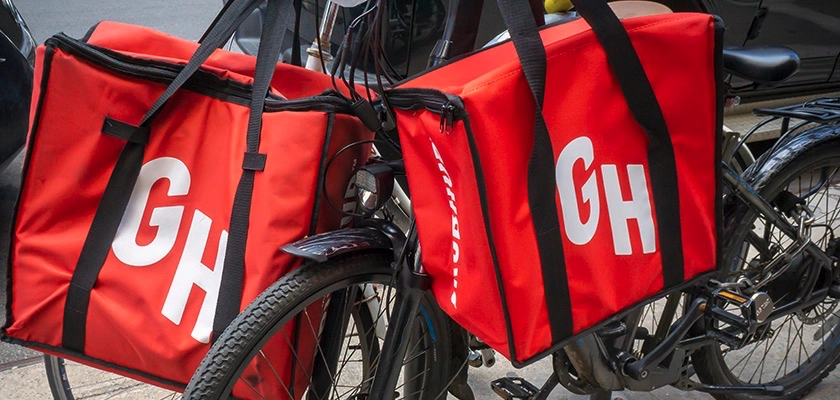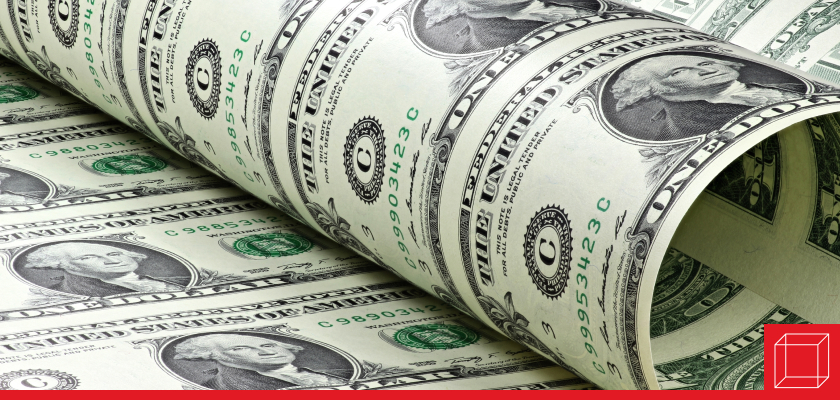Food Delivery Apps Struggle to Deliver Profits | June 2021
Despite the boom in delivery apps throughout the COVID-19 pandemic, many companies still failed to gain profits.

The number of food delivery apps has exploded. From DoorDash and Grubhub to Uber Eats and goPuff, these services offer meal delivery right to your door from a large selection of local and national restaurants. While these companies experienced record-breaking downloads and sales during the COVID-19 pandemic, a time when a significant number of people were socially distanced due to health and safety concerns, the companies failed to deliver profits.
How Do Food Delivery Apps Make Money?
Apps earn money by charging both restaurants and consumers fees. Restaurants are generally charged a percentage of the order while consumers are charged a flat delivery fee. The app companies use that money to pay the drivers. After operating expenses and advertising, which these companies have heavily invested in, the food delivery apps are left with a very small percentage of the customer’s overall bill.
This slim margin could be further reduced by municipalities and states that have capped what apps can charge restaurants. Many cities are considering turning temporary commission caps, designed to protect small businesses, into permanent measures.
DoorDash and Uber in particular hope to achieve profitability by increasing the average order size, bundling other goods with food to reduce delivery costs, using technology to reduce errors and refunds, converting users into monthly subscribers, and diversifying their offering.
Diversifying the Product Offering
It’s estimated that these companies will not be profitable for several more years. Due to the low-margin nature of the business, scale is necessary for success. According to The Wall Street Journal, DoorDash, the biggest food delivery service in the country with 52 percent market share, was the only food delivery company to have a profitable quarter during the pandemic.
Uber Eats, which now services 100,000 independent restaurants around the globe, holds about 30 percent of the market for on-demand food delivery services. Uber Eats saw a sharp increase in bookings during the pandemic, attracting many new first-time customers, but experienced millions of dollars in losses due to the cost of promotions. Despite the struggle, Uber Technologies Inc. has remained committed to making Uber Eats a successful platform. Case in point, Uber introduced grocery delivery in select markets to expand its platform and meet consumer demand. Uber expects the demand for grocery delivery will be sustained over the long term.
Food delivery companies are also expanding into the more lucrative alcohol delivery category. Uber acquired alcohol-delivery service Drizly for $1.1 billion and DoorDash partnered with Square Inc., a payment processing platform, to deliver alcohol. Though there are legal hurdles to jump with booze delivery, the high-margin category could serve these companies well as consumer demand grows and liquor laws loosen.
The Future of Food Delivery
A major factor at play is the amount of competition in the on-demand food delivery market. DoorDash, Grubhub, Uber Eats, goPuff, and Bite Squad are just a few of the companies fighting for dominance. Consolidation in the industry, however, has helped. Uber acquired Postmates, Grubhub acquired Seamless, and DoorDash acquired Caviar, just to name a few examples.
While Uber Eats and DoorDash double down on their business models, Grubhub is trying a different approach. Grubhub, which commands 18 percent of the fod dlivery market, was the original pioneer in online ordering. Initially, its business model was to function as an online marketing service for restaurants that relied on the restaurant’s employees to deliver food. As competition heated up, the company reluctantly gave in and embraced the delivery side of the business. Now, however, Grubhub says it is skeptical about the long-term growth of app delivery. The company is focusing on its advertising service, finding better ways to nurture its relationships with restaurants.
Food delivery app companies are placing their bets on the best ways to grow their profit margins. Only time will tell which bets will pay off.
In the Classroom
The goal of business, as discussed in Chapter 1: The Dynamics of Business and Economics, is to earn a profit. Students may be surprised to learn that well-known companies struggle with this fundamental goal. This article could also be used to support Chapter 12: Dimensions of Marketing Strategy in a conversation about product diversification strategy.
Discussion Questions
- Do you use food delivery apps? If yes, consider your order frequency and average order total. Do you think you are a profitable customer for these app companies?
- If food delivery is a low-margin category, why do you think so many businesses are fighting for a slice of the market?
- Do you think diversification will be the key to making delivery apps profitable? If not, what tactic do you think will make the biggest impact?
This article was developed with the support of Kelsey Reddick for and under the direction of O.C. Ferrell and Linda Ferrell.
Sources:
Alicia Kelso, "Uber Eats Earmarks $20m in Expansion of Independent Restaurant Support," Restaurant Dive, February 4, 2021, https://www.restaurantdive.com/news/uber-eats-earmarks-20m-in-expansion-of-independent-restaurant-support/594507
Heather Haddon, "Booze To-Go Is Here to Stay," The Wall Street Journal, May 29, 2020, https://www.wsj.com/articles/booze-to-go-is-here-to-stay-change-in-alcohol-laws-11622243826
Preetika Rana and Heather Haddon, "DoorDash and Uber Eats Are Hot. They’re Still Not Making Money," The Wall Street Journal, May 28, 2021, https://www.wsj.com/articles/doordash-and-uber-eats-are-hot-theyre-still-not-making-money-11622194203



